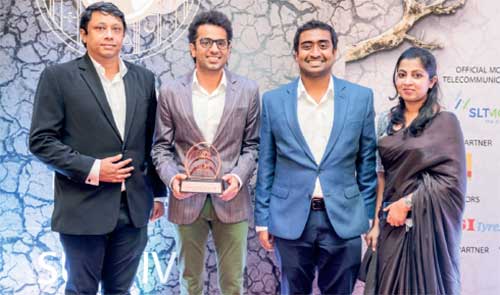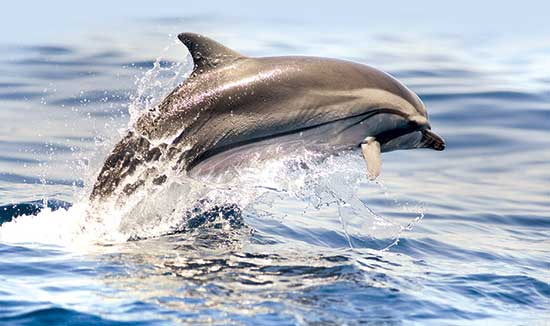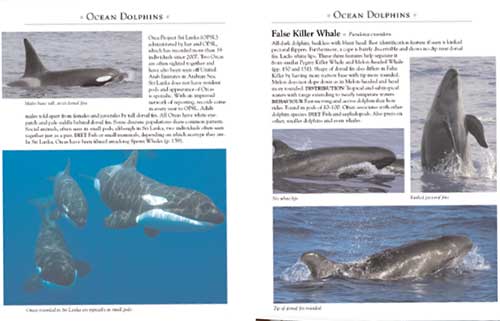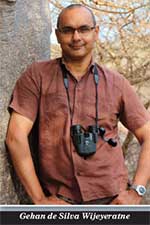Life style
Temple art, frescos, and murals

Book Review
L.T.P MANJUSRI – Artist and Scholar (1902-1982)
By Shamil Wanigaratne
Publisher: Bay Owl Press
Price: Rs.7500
by Jomo Uduman
Most of us art lovers have certainly known of Manjusri. Associating him with, temple art, frescos, and murals. While not really prepared to delve or dive any deeper. That’s why Shamil Wanigaratne’s gem of a book (or monograph) that covers a gigantic canvas simply exploded in front of me. A riot of colour, fine drawings, draftsman-like detail, soft tones, subtle textures and delicate tints that unfurled Manjusri to be a classic prodigy, a national hero, who contributed enormously to our culture, art and history. Shamil’s brilliantly laid out and packaged missile of 240 pages (that took 10 years to produce) has brought on and showcased Manjusri to easily be one of the most versatile artists the world has ever known.
 Shamil, first meticulously traces, chronicles and narrates the life and times of Manjusri . A timeline and a biography. Early education in a Muslim school in Beruwela! Performing Nadagam and Kolam, Apprentice carpenter at 11, An interest in levitation. Joined a Pirivena at 13 and ordained a monk at 19.The same year left for “Shantiniketan” the school of learning set up by Rabindranth Tagore whom he met there and Nandalal Bose who introduced him to the appreciation of art. His journey to Tibet that ended at Gangok in Sikkim and a formal training in art from Abbot Uchima. The Japanese spy incident. A founder member of the 43 Group from which he quickly fled. Student of many languages, life as a Journalist, Artist, Craftsman, Friend, exhibiting in London, Vienna and New York, winner of the Ramon Magsaysay Award – Asia’s Nobel Prize, Commemoration Stamp in his honor..
Shamil, first meticulously traces, chronicles and narrates the life and times of Manjusri . A timeline and a biography. Early education in a Muslim school in Beruwela! Performing Nadagam and Kolam, Apprentice carpenter at 11, An interest in levitation. Joined a Pirivena at 13 and ordained a monk at 19.The same year left for “Shantiniketan” the school of learning set up by Rabindranth Tagore whom he met there and Nandalal Bose who introduced him to the appreciation of art. His journey to Tibet that ended at Gangok in Sikkim and a formal training in art from Abbot Uchima. The Japanese spy incident. A founder member of the 43 Group from which he quickly fled. Student of many languages, life as a Journalist, Artist, Craftsman, Friend, exhibiting in London, Vienna and New York, winner of the Ramon Magsaysay Award – Asia’s Nobel Prize, Commemoration Stamp in his honor..
Shamil then gives us a spectacular gem studded tour of the exceptionally wide spectrum of Manjusri’s art. From the temple paintings of the Kandyan era which he copied and preserved, to paintings with Buddhist themes and Tibetan influences. Surrealism to Cubism. Abstract Expressionism to Abstract Symbolic Works. Still Life, Animal Drawings and Paintings and Landscapes. One of my favorites is the enigmatic painting “Artist” (also on the book cover). “The artist is represented only by the hand poised with a paintbrush. Two women, one viewed frontally, the other in profile, occupy the foreground. They are set within a forest populated with a lion, an elephant, birds, a butterfly and a toad, set in a hybrid landscape which includes Persianate-style rock formations and clouds, as well as Japanese inspired cherry blossom, bamboo and other landscape elements. The rich complexity of design elements adds to the paintings engaging presence”. My other favorites include “Nun and Noble Female Devotee”, “Tibetan Deity”, “The Bathers”, “Mother and Child”, “The Nativity”, “Woman in Hat”, “Woman in Purdah”, “Breast”..
G.P Malalasekera’s description of Manjusri’s vast and diverse art is apt and may be a good starting point in trying to understand his oeuvre: “He is full of contrasts, even contradictions. His artistic fecundity and variety are amazing. He is dexterous in the conventionalized and detailed line-work of traditional Indian and Sinhala art as in producing work obviously inspired by the modern exponents of Abstractionism and Surrealism. Nobody can doubt his remarkable ability as a draftsman. He has shown great ability in adapting for his own purposes the lessons to be learnt from the most ‘advanced’ painters from the west without, happily, yielding to imitation as so many of his contemporaries have done… He is skilful in handling soft tones and delicate tints as in the daring juxtaposition of the most varied and most brilliant colours. He is an exponent of all styles without developing a style of his own”.
 What captivated me most was that, Manjusri was really a simple, gentle, generous, honest, humble human being who could engage (and navigate) easily with anybody he came across during his multi faceted life. Born in Aluthgama and named L.T. Peiris, nobody knows how he mysteriously acquired the name Manjusri which means “Gentle Glory” in Sanskrit! Manjusri is one of the most important iconic figures in Mahayana Buddhism and is known as the Bodhisattva of Great Wisdom.
What captivated me most was that, Manjusri was really a simple, gentle, generous, honest, humble human being who could engage (and navigate) easily with anybody he came across during his multi faceted life. Born in Aluthgama and named L.T. Peiris, nobody knows how he mysteriously acquired the name Manjusri which means “Gentle Glory” in Sanskrit! Manjusri is one of the most important iconic figures in Mahayana Buddhism and is known as the Bodhisattva of Great Wisdom.
Shamil also generously lends some space to the art of Manjusri’s children Manjista, Mandalika and, Kushan who particularly helped him immensely in putting this book together. Copies of paper cuttings that document Manjusri’s articles with sketches and other significant contributions to our cultural history also adorn the book together with very interesting letters written by his many admirers.
Dr. Shamil Wanigaratne is a much sought after Clinical Psychologist and a specialist in the field of addiction and mental health capacity building who lives in the UAE while doing a lot of bro bono work in Sri Lanka. In the year 2000 he published another excellent book to commemorate and introduce the works of George Claessen – a founder member (together with Manjusri) of the 43 Group who many believe heralded the dawn of Modern Art in Sri Lanka. Shamil’s interest, knowledge and love for art is indeed extraordinary. I am sure there will be much better reviews of this wonderful book on the Life, Voyage and Works of Manjusri that will be written and published soon. But I do hope mine will quickly inspire and gently nudge art lovers to take the first step in owning and relishing its valuable contents so lovingly put together by Shamil.
- News Advertiesment
See Kapruka’s top selling online shopping categories such as Toys, Grocery, Flowers, Birthday Cakes, Fruits, Chocolates, Clothing and Electronics. Also see Kapruka’s unique online services such as Money Remittence,News, Courier/Delivery, Food Delivery and over 700 top brands. Also get products from Amazon & Ebay via Kapruka Gloabal Shop into Sri Lanka.
Life style
LUXASIA aims to lead luxury beauty’s growth in Sri Lanka

Sri Lanka is a land renown for stunning natural beauty. Yet, LUXASIA still managed to usher in a different kind of beautiful to the market through its expertise in luxury beauty retail and omni-distribution.
In November 2019, LUXASIA unveiled its inaugural classy beauty counters at Odel, One Galle Face. Since then, it has brought enchanting fragrances from luxury brands such as Burberry, Calvin Klein, Gucci, and Marc Jacobs, as well as trendy skincare from KORA Organics to beauty-lovers in an exquisite and captivating retail format.
Now, having successfully overcome the challenges in 2020 imposed by COVID-19 and related lockdowns, LUXASIA is ready and excited to thrill Sri Lankan consumers again. This time, it is with the launch of both skincare and make-up collections from the prestigious Japanese beauty brand, Shiseido. Arriving with a glamorously magnificent pop-up at One Galle Face from 8 to 14 February 2020, LUXASIA promises to bring memorable consumer experiences and a feast for the eyes that showcases the best in Japanese beauty.
Leading up to this pop-up, LUXASIA partnered the Key Opinion Leaders (KOLs) and top influencers of Sri Lanka to excite the beauty community with a sneak peek of what Shiseido have to offer. This campaign garnered more than 100,000 social interactions, with over 1.2 million social media impressions, piquing consumers’ fascination in Shiseido’s award-winning and best-selling serum, The Ultimune Power Infusing Concentrate.
Looking ahead into 2021, LUXASIA aims to continue delighting consumers with even more fresh retail innovations to spice up the luxury beauty scene in Sri Lanka. Soon, fragrance enthusiasts can expect a unique pop-up of all the scents that Luxasia carry, featuring new launches from Davidoff and Calvin Klein, as well as other interesting novelties. Beauty-lovers can also expect more limited edition products and gifts-with-purchases, interesting workshops, as well as seasonal offerings in the coming months. Concurrently, LUXASIA also aspires to continue grooming the Sri Lankan beauty community through more entertaining collaborations with KOLs throughout 2021.
LUXASIA sees immense potential in Sri Lanka’s fast-growing beauty market and has been its voice in the international beauty industry. For some time now, LUXASIA has been relentlessly reaching out to numerous luxury beauty brands across to world to interest them in Sri Lanka. While it is encouraging to see the first-fruits, LUXASIA is aiming much higher. Forging ahead, LUXASIA strives to champion and lead the growth of luxury beauty in Sri Lanka, through even more partnerships with great brands, and by continuously delighting consumers.
Life style
Newly published guide opens many windows on whale watching

by Ifham Nizam
Shipping lanes to the south of Dondra pose the threat of ships colliding with whales as the area has very rich marine life which also attracts whale watching boats, says prolific wildlife writer and photographer Gehan de Silva Wijeyeratne, author of the recently published ‘A Naturalist’s Guide to the Mammals of Sri Lanka’.
He says international shipping industry organizations have written to the government to push back the existing shipping lanes and if no action is initiated, there is the danger of whale watching boats colliding with vessels.
Dr. Susannah Calderon and her colleagues at the University of Ruhuna have recommended the shipping lanes be moved 15 nautical miles south. The cost impact to all concerned will be negligible, but it significantly improves safety at sea, especially at night when the sea is dotted with the lamps from hundreds of small fishing crafts in the path of giant container carriers.
“It is primarily a safety issue though an important secondary impact will be that it reduces fatal collisions with whales, while generating favourable publicity for the government of Sri Lanka. It boils down to moving the shipping lanes further south and saving lives, Wijeyeratne stressed in an interview with The Sunday Island.
Asked what’s special about his latest publication, he said: “This is the first photographic field guide which covers nearly all of the mammals found in Sri Lanka. It covers 96 per cent of the land and marine mammals. The book, which is portable and affordable, also contains a large number of images from 40 photographers which are practically useful in the field to identify  a mammal to species level. It also covers a number of small, discrete, nocturnal mammals whose existence that even many local wildlife enthusiasts will not be aware of.”
a mammal to species level. It also covers a number of small, discrete, nocturnal mammals whose existence that even many local wildlife enthusiasts will not be aware of.”
On the book’s coverage of the marine mammals, Wijeyeratne said there are two noteworthy aspects. Firstly, it covers all the species recorded in Sri Lankan waters expect for one, the Omura’s Whale. This will be included in a second edition. Secondly, it uses images of the whales and dolphins (cetaceans) which will show the animals the way a whale watcher will see them on the surface.
Artwork that shows the whole animal is important, but in field conditions, they are often of limited value to identify cetaceans which only show a little of their upper body in sections at a time they surface.
Q: You were the first to publicize that Sri Lanka was the best location for Blue Whale sightings and offered the best chance to see a superpod of Sperm Whales. Can you explain briefly how you set about branding Sri Lanka as a top international destination for whale watching?
A:
I started with field work to ascertain the facts and launched a media campaign initially with Jetwing Eco Holidays and Jetwing Hotels which was supported over many years by the Sri Lanka Tourism Promotion Bureau (SLTPB) and others in the media and tourism business. I have published 37 articles on whale watching in Sri Lanka. The first, in May 2008, was pivotal as it boldly stated that Sri Lanka was best for Blue Whales. This set everything in motion. My articles give due credit to many people who were a part of this amazing story. This includes Dr. Charles Anderson who first told me it would be feasible to see Blue Whales from the South.
A Belgian millionaire philanthropist who prefers to remain anonymous and helped create the infrastructure for whale watching by 13 tsunami affected fishing youth who set up Mirissa Water Sports and Sue Evans who was important for connecting all of us and Anoma Alagiyawadu (the Jetwing Lighthouse Naturalist) whom I tasked with collecting the initial data for the Encounter Rates I publicized in the media.
 Remarkably, no Sri Lankan marine biologist played any role in publicizing whale watching in the early years. However, soon after, they benefited by being thrust into the media spotlight by film crew researchers who had read the publicity which began with my various widely disseminated articles. Having read them, and sometimes after conversations with me, the film crews and the press came to Sri Lanka and incorporated local marine biologists into their story.
Remarkably, no Sri Lankan marine biologist played any role in publicizing whale watching in the early years. However, soon after, they benefited by being thrust into the media spotlight by film crew researchers who had read the publicity which began with my various widely disseminated articles. Having read them, and sometimes after conversations with me, the film crews and the press came to Sri Lanka and incorporated local marine biologists into their story.
At the time I broke the first story, I do not think any of the local marine biologists had even one image of a Blue Whale of a publishable standard or had any idea that Sri Lanka was the best place in the world to see Blue Whales. Hopefully, the increased profile of local marine biologists has made it easier for them to raise the funds needed for their important research.
Q: Did the Sri Lanka Tourism Promotion Bureau help your efforts with publicity and branding?
A:
Yes indeed. At the start of the publicity campaign, we produced a series of informative and attractive publications designed by Chandrika Maelge. These were printed and distributed at key consumer and travel trade fairs such as the Bird Fair, WTM and Destinations where a number of important press and tour operators were informed about Sri Lanka being a good place for whales. At some of the press drinks events in London hosted by Jetwing Eco Holidays, around 35-45 press people would attend. These events were held in collaboration with the London Office of the SLTPB.
In some years, As many as three of these press events were held allowing personal interaction with a wide pool of media people. Another important and later development is the role played by Nalin Perera who ran the SLTPB office in London for several years and attended many consumer and travel trade fairs. I had developed media briefs for him which he would print and distribute. In one conversation, he estimated that he had printed and distributed over 10,000 copies of this material.
There were others who also disseminated my stories to the international press; a notable example being Chitral Jayatilake who shared my publicity pdfs with various wildlife documentary makers he invited to Sri Lanka.
Q: Did everyone readily embrace your ideas?
It took a couple of years. I remember even into the second year of the publicity campaign there were doubts from the big companies in tourism.
I remember Srilal Miththapala who was then President of The Hotels Association of Sri Lanka speaking to me and joining a celebrity whale watching event I was leading with Shyamalee Tudawe. This was organized by Olivia Richli of the Amangalla in Galle.
Srilal wanted to report back to the association if there was any truth to the claims being made by me about how easy it was to see Blue Whales. On the coastline, the people running small guesthouses readily embraced the story as tourists who were reading my stories turned up with copies of my articles and asked for boats to take them whale watching. The international press also readily took it on as I provided credible data.
Q: What do you say to criticisms that whale watching needs better regulation?
I agree on the need for better regulation and higher standards. The tourism industry has played its part in publicizing whale watching. Other state agencies also need to step up their efforts to regulate the industry in a way that is good for the welfare of the animals and provide a good visitor experience.
Q: What do you expect ‘A Naturalist’s Guide to the Mammals of Sri Lanka’ to achieve?
I would like people to understand that there is still a lot to be discovered about Sri Lanka’s mammals and I hope this portable and affordable guide will find its way into the hands of local naturalists and inspire more research and more practical steps to conserve habitats and species.
Life style
Modern Brides and Grooms collection by LOVI Ceylon and friends

Brides and Grooms of Sri Lanka – Reimagined
“Together we’re creating moments of happiness and cherished memories for the new couple and their families” said Founder and CEO of LOVI Ceylon, Asanka de Mel, as he introduced LOVI Ceylon’s Groom collection. Each groom’s look was paired with extraordinary creations from Sri Lanka’s top bridal designers, jewelers, florists, hair and make-up artiste and was captured by story-telling photographers.
The presentation graciously hosted by the Taj Samudra and Shangri-La hotels saw 30 leading designers working hand in hand to infuse fresh ideas, celebrate cultural diversity and show-off Sri Lankan couture—the island’s hand craft heritage.
The stunning bridal costumes were painstakingly made by renowned designers Messrs. Dhananjaya Bandara, Rishard Raheem, and Michael Wijesuriya as well as Mses. Indi Yapa Abeywardena of Brides by INDI, Sonali Dharmawardena, Darshi Keerthisena of Buddhi Batiks, Ramona Oshini, Sandani Perera of IKIGAI Bridal, and Jaish Parathalingam of Aashkii. The newcomer, Ms. Anusha David also presented her couture creations under the label Gabriel.
“We want our Groom and all of the men in the wedding including the groomsmen, dads, young boys and friends, to be themselves–to feel rooted in culture, well dressed and at ease on the wedding day,” says Asanka. Celebrating the religious and cultural traditions including Buddhist, Christian, Hindu, Kandyan, Malay, Muslim, Sinhala, Tamil and western traditions of the island LOVI Ceylon’s Grooms’ range presented modern sarongs paired with formal shirts, jackets, kurtas and more. They were paired with sarees, dresses, lehengas, pant suits and an array of breathtaking outfits. There were many looks offered for the Sri Lankan diaspora, as well as couples seeking inspiration for destination weddings.
As the designs progressed from sketch to stitching, our jewelry partners Careems, Lalitha, Mallika Hemachandra, Tiesh and Vogue jewelers added their brilliant sparkles with handcrafted fine jewelry made of precious metals encrusted with diamonds, sapphires and rubies. And what wedding would be complete without flowers? Bringing the latest floral creations were florists Designer Flowers, Flowers by Joan and Karen Forbes, Lassana Flora, and Supreme Flora who made the spectacular bridal outfits blossom with their creations.
Breathing life into these wonderful creations with superb hair and make-up was anchor of the shoot, Ms. Nadiya Fernando and her collaborator Omesh, while Ramani Fernando Salons, Shane Perera, Viran Peter, Brides by Leena and Talia designs, also worked magic on the models.
The father son duo Dinuka and Dineth Fonseka of Studio3000 took on the herculean task of capturing all the creations as the anchor photography partner. The works of Ashene Bernard, Amarante Studio, Geeshan Bandara, and Portrait Culture were also presented in imaginative and artistic captures.
De Mel expressed his thanks to the wonderful models who brought the visions and fancies of the designers to life, as well as poet and author Ashok Ferrey for being the MC of the shoot and providing an eloquent commentary, delivered with his inimitable panache!
“We have world class craftsmanship here, it’s fun to work with so many experts, who just happen to be friends, to present a beautiful collection that could nudge the course of Sri Lankan clothing identity” said Asanka when asked about the work that went into this.
As he rightly reminded the gentlemen to choose wisely, “on that special wedding day, when all eyes are on her–her eyes are on you!”









